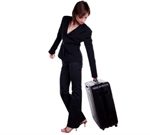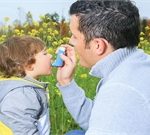(HealthDay News) — The bones that form your spine are cushioned by round discs. A herniated disc is a disc that has been pushed out of place, says the American Association of Neurological Surgeons. The group mentions warning signs of a herniated disc: Low backache. Numbness or weakness in parts of the body. A sharp, electric shock-like pain on one side of the body. Burning or tingling that radiates into the leg or shoulder. Sometimes, these symptoms can worsen with standing, walking or sitting.
A little about: Weekly Gravy
All Sauce from Weekly Gravy:
Could You Be Allergic to Additives?

You suddenly break out in a rash or your throat gets scratchy. You assume you’re allergic to something … maybe pollen or a detergent. But could you be allergic to something in your food or medicine, and how could you tell? The medical community disagrees as to whether additives in food or even medications — such as dyes, preservatives or emulsifiers — cause true allergic reactions. And many are convinced that if reactions do occur, they are rare rather than widespread. The traditional thinking has been that the molecules from chemicals in food are too small to cause major reactions. But one small study, published in the Journal of Drugs in Dermatology, found that patients who had skin disorders improved when they switched to medications without the dyes FD&C Blue No. 1 (bright blue) and Blue No. 2 (indigo carmine). The researchers stated that reactions to agents that color medications and foods may be more common than once appreciated. Common Food Additives Vitamins Minerals Flavorings Colorings Preservatives In recent years, the move towards all things “natural” has caused many food manufacturers to switch from synthetic additives to natural ones derived from plant, animal or even insect byproducts. Ironically, some experts say that our bodies may react more to natural than synthetic dyes and preservatives because our immune system is trained to recognize them as invading… read on >
The Pluses of ‘Steady-State’ Training

It’s hard to escape all the fanfare surrounding HIIT, or high-intensity interval training, which prevents plateaus by keeping your body at your max heart rate for very short intervals. But another training approach called steady-state training, or SST, may be just as important, if not more so, depending on what you’re trying to accomplish. Steady-state training is the opposite of HIIT yet, at the same time, is complementary to it. It involves maintaining a specific heart rate below your target maximum for an extended period of time. Using a treadmill workout as an example, with HIIT you walk for two minutes and then run all out for one minute. With SST, you walk at a brisk pace the whole way through. While HIIT is a known calorie torcher, there are plenty of pluses to SST. It’s great for strengthening the heart: Maintaining a steady state of aerobic output forces the body to become efficient at pumping oxygenated blood through the body. A constant steady state also helps the body burn fat for fuel. There also is less chance of injury than when you change pace in high-intensity interval training. So does SST have any downside? The answer is yes. You are at a higher risk for stress or repetitive injury simply because you are doing the same thing for a longer period of time over… read on >
Is Green the Feel-Good Color of the Holidays?

There’s one type of green Christmas that’s likely to bring joy to gift-givers and recipients alike, a new Canadian study suggests. That’s one based on green consumerism — a push to buy gifts produced in ways that protect the natural environment. For this study, researchers at Concordia University in Montreal asked volunteers how a number of green and not-green products made them feel. The green products generally produced positive feelings, researchers reported. Those who listened to music on green-labeled headphones, for instance, said they enjoyed the music more than those who used conventional headphones. “The warm glow is a good overall feeling,” said study co-author Onur Bodur, a professor of marketing. “It is found in other literature relating to pro-social behavior. You get the feeling when you help others and have a sense of accomplishment that gives you satisfaction.” Participants also reported feeling a warm glow after using a green product, and those who felt isolated reported feeling less so, according to the study published recently in the Journal of Consumer Research. The study also found that actually using green products, such as cleaning solutions, helped dispel a belief that such products were inferior. The findings could have big implications for retailers. “Imagine that the chair you are sitting on is certified bamboo, or the tablecloth at a restaurant is made of recycled materials and… read on >
Health Tip: Winter Sports Safety
(HealthDay News) — Sports such as skiing, snowboarding and ice skating can sometimes lead to sprains, dislocations and fractures. In fact, some 200,000 people are treated for winter sports-related injuries every year, says the American Academy of Orthopaedic Surgeons. To avoid hurting yourself, the academy suggests: Never engage in a winter sport alone. Keep in shape and warm up sufficiently. Wear appropriate protective gear and layers of water-resistant clothing. Check that equipment is working before use. Take lessons from a qualified instructor. Drink plenty of water before, during and after the sport. Be aware of how to get help if frostbite or hypothermia occur. Pay attention to weather updates and storm warnings. Abide by all rules of the sport.
How to Stay Fit When You’re Traveling for Work or Fun

If you travel a lot for business or pleasure, you may think that the most exercise possible is lugging your bags in and out of a car or through an airport. But it’s important to get in real exercise even when you’re away from home. If you’re a business road-tripper, look for snippets of time to move those muscles, like when you stop for gas. Any bodyweight calisthenics will do. Think: squats. There are many varieties, but the basic is a powerhouse move. Stand with feet a little more than shoulder-width apart, arms out in front of you. Bend the knees and push your hips back, lowering your body until your thighs are below your knees if possible. And then return to standing position. Do three sets of 10. At your hotel, do planks or push-ups and some crunches. If stuck in a car or on a plane for any length of time, try isometric exercises, where you can contract your muscles without needing to move around a lot. Put the palms of your hands together and press as hard as you can. That will engage your chest muscles. Contracting your gluteal muscles can help your lower back. Remember to hold each isometric exercise for 10 seconds. Do a few sets of 10 reps each. Once you get to your destination, if you don’t have… read on >
Kids’ ‘Microbiome’ May Play Key Role in Asthma

Microbes that live in a child’s upper airway could be linked to severe asthma attacks, new research suggests. For parents, it’s an all-too familiar scene: A child’s seemingly harmless cough quickly escalates to wheezing, gasping and an urgent need for emergency treatment. Asthma is the leading chronic disease in kids and third-most common cause of hospitalization among those under 15, according to the Asthma and Allergy Foundation of America. Now, a new study found an association between asthma flare-ups in children and the makeup of the upper-airway microbiome, communities of microscopic organisms that include bacteria. “In the future, we wish to understand whether the upper-airway bacteria can play a causal role in the severity of asthma symptoms,” said study author Dr. Yanjiao Zhou, who conducted the research at Washington University School of Medicine in St. Louis. She is now an assistant professor of medicine at UConn Health in Farmington, Conn. Zhou and her colleagues collected data on 214 school-aged children who were part of a clinical trial. Participants had mild to moderate asthma that was being treated with daily inhaled corticosteroids. Nasal samples were collected twice — once when asthma was under control, and again when kids had the signs of an emerging flare-up, what the investigators called the “yellow zone.” The researchers said kids who had early warning signs of a flare-up were more… read on >
‘Shopping Addiction’ Can Cause Harm, and It’s Moved Online

The holidays are peak buying time, and perhaps the worst time of the year for people who simply can’t control their urge to shop. Now, research shows that the ease of online purchasing could be making things worse for people with so-called “buying-shopping disorder” (BSD). BSD is still debated as a stand-alone diagnosis, and hasn’t yet been included in the psychologists’ bible, the Diagnostic and Statistical Manual of Mental Disorders. But that’s probably only because not enough good data on the condition exists, said the author of a recent study into online shopping addiction. There’s a “relative lack of published scientific literature,” said Dr. Astrid Muller — but psychologists have long dealt with such cases. “There is well over 100 years of clinical history describing dysfunctional buying or acquisition excesses that interfere with daily life, and are associated with significant clinical distress and impairment in important areas of functioning,” said Muller. She’s head psychologist in the department of psychosomatic medicine and psychotherapy at Hannover Medical School in Germany. BSD is defined as an “extreme preoccupation with shopping and buying [and] to impulses to purchase that are experienced as irresistible,” Muller said. The condition can cause real harm, including post-purchase guilt and regret, a sense of loss of control, family conflict over excessive purchasing, and financial distress. According to Muller, BSD is thought to affect about… read on >
Health Tip: Preparing Your Car for Winter
(HealthDay News) — Winter storms and cold temperatures can be dangerous. But if you get your car ready for cold weather, you can have a safer winter, says the U.S. Centers for Disease Control and Prevention. The CDC suggests: Service the radiator and maintain antifreeze. Check the tread on all tires, or replace tires with all-weather or snow tires. Keep your gas tank full to avoid ice in the tank and fuel lines. Use a wintertime formula in your windshield washer. The CDC also encourages you to prepare a winter emergency kit for your vehicle. It should include blankets, food and water, compass and maps, a first-aid kit, plastic bags, car supplies and a flashlight.
Health Tip: 7 Ways to Prevent Wrinkles
(HealthDay News) — Facial wrinkles can be caused by aging, smoking and sun damage, says Cleveland Clinic. Though there are treatment options for wrinkles, it’s best to prevent them before they develop. Cleveland Clinic mentions these ways to prevent wrinkles: Apply sunscreen every day as part of your morning routine. Avoid products that are harsh on the skin. Find gentle moisturizers. Consume less sugar and refined carbohydrates. Get fresh air. Avoid environmental pollutants, such as soot and exhaust. Do your best to get six-to-eight hours of sleep each night. Include healthy fats in your diet, such as olive oil, nuts and avocado. If you smoke, quit.









